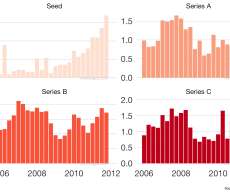Why Uber is The Revenge of the Founders
Steve Blank
OCTOBER 24, 2017
— Unremarked and unheralded, the balance of power between startup CEOs and their investors has radically changed: IPOs/M&A without a profit (or at times revenue) have become the norm. Typically, this caliber of bankers wouldn’t talk to you unless your company had five profitable quarters of increasing revenue. Board Control.















Let's personalize your content